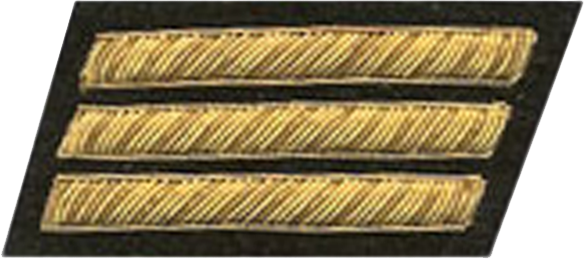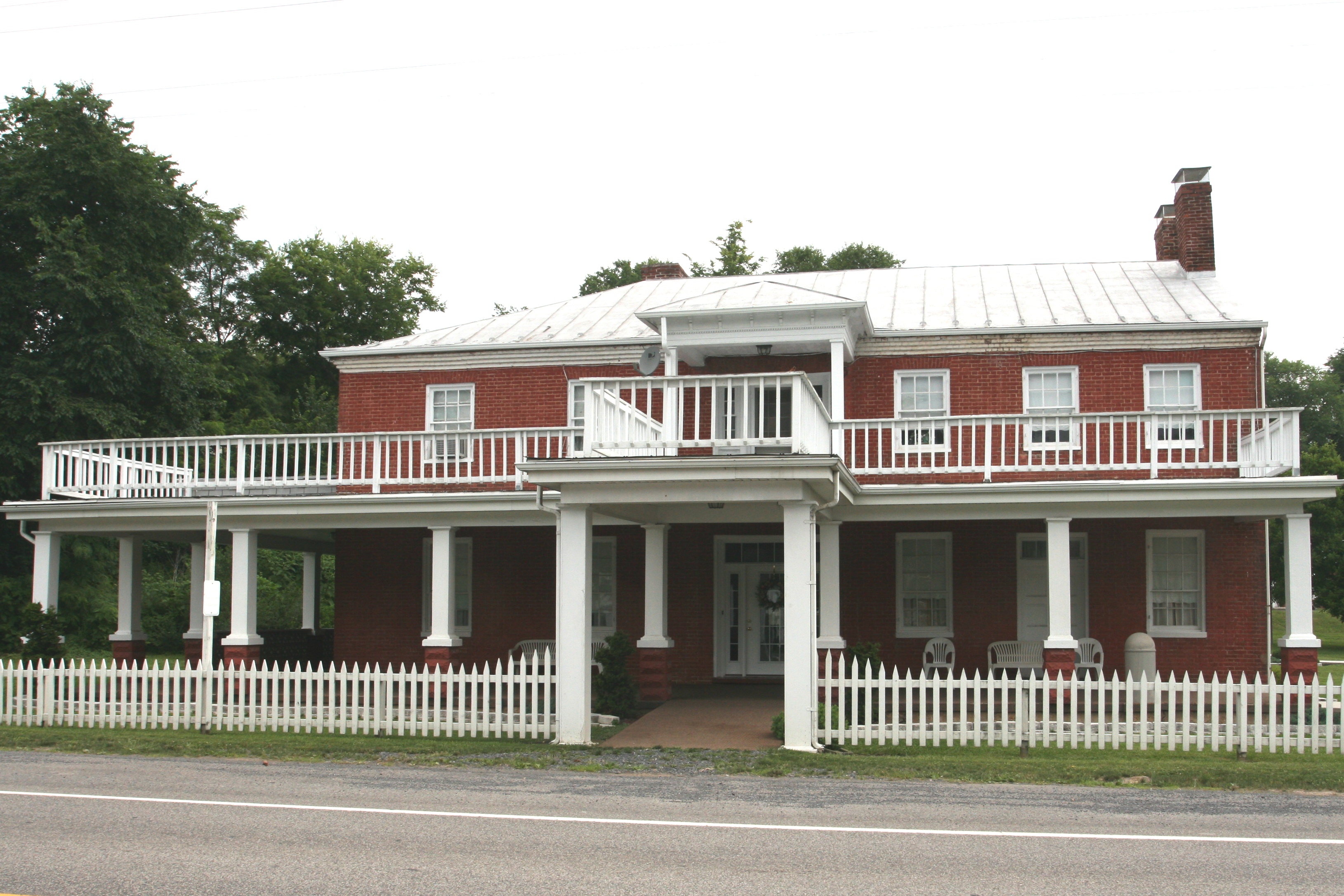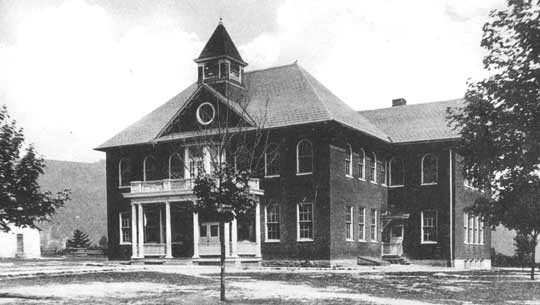|
McNeill's Rangers
McNeill's Rangers was an independent Confederate military force commissioned under the Partisan Ranger Act (1862) by the Confederate Congress during the American Civil War. The 210 man unit (equivalent to a small or under-strength battalion) was formed from Company E of the 18th Virginia Cavalry and the First Virginia Partisan Rangers ( 62nd Virginia Mounted Infantry). After the repeal of the Act on February 17, 1864, McNeill's Rangers was one of two partisan forces allowed to continue operation, the other being 43rd Battalion Virginia Cavalry (Mosby's Raiders). Both of these guerrilla forces operated in the western counties of Virginia and West Virginia. The Rangers were known to exercise military discipline when conducting raids. However, many Union generals considered Captain John Hanson McNeill (1815–1864) and his men to be " bushwhackers," not entitled to protection when captured, as was the case with other prisoners of war. Background In 1861, John McNeill — a na ... [...More Info...] [...Related Items...] OR: [Wikipedia] [Google] [Baidu] |
John Hanson McNeill
John Hanson "Hanse" McNeill (June 12, 1815 – November 10, 1864) was a Confederate soldier who served as a captain in the Confederate Army during the American Civil War. He led McNeill's Rangers, an independent irregular Confederate military company commissioned under the Partisan Ranger Act. Early and family life McNeill was born near Moorefield, Virginia (now West Virginia). He was the son of Strother and Amy Pugh McNeill. In 1848, he moved himself, his wife, three sons and one daughter to Boone County, Missouri, where he operated a cattle business. Civil War In 1861, he formed and was named commander of a company in the Missouri State Guard, seeing action in Boonville, Carthage, Wilson's Creek, and Lexington. Although captured and imprisoned in St. Louis, he escaped on June 15, 1862, and made his way back to Virginia. In Richmond, he obtained permission to form an independent unit in the western counties of West Virginia and Virginia in order to disrupt Union activi ... [...More Info...] [...Related Items...] OR: [Wikipedia] [Google] [Baidu] |
Richmond, Virginia
(Thus do we reach the stars) , image_map = , mapsize = 250 px , map_caption = Location within Virginia , pushpin_map = Virginia#USA , pushpin_label = Richmond , pushpin_map_caption = Location within Virginia##Location within the contiguous United States , pushpin_relief = yes , coordinates = , subdivision_type = Country , subdivision_name = , subdivision_type1 = State , subdivision_name1 = , established_date = 1742 , , named_for = Richmond, United Kingdom , government_type = , leader_title = Mayor , leader_name = Levar Stoney ( D) , total_type = City , area_magnitude = 1 E8 , area_total_sq_mi = 62.57 , area_land_sq_mi = 59.92 , area_water_sq_mi = 2.65 , elevation_m = 50.7 , elevation_ft = 166.45 ... [...More Info...] [...Related Items...] OR: [Wikipedia] [Google] [Baidu] |
Burlington, West Virginia
Burlington is a census-designated place (CDP) in Mineral County, West Virginia, United States, located along U.S. Route 50 (also known as the Northwestern Turnpike) where it crosses Pattersons Creek. As of the 2020 census, its population was 131. It is part of the Cumberland, MD- WV Metropolitan Statistical Area. The ZIP code for Burlington is 26710. Festivals Burlington is the home of the Old Fashioned Apple Harvest Festival (started in 1973), which has grown into the biggest celebration of its kind in the Eastern Panhandle of West Virginia. It is held annually on the first weekend of October. History Burlington is situated along the old Northwestern Turnpike ( US 50) in southeastern Mineral County, West Virginia. German and English settlers began to populate the area of Burlington in the second quarter of the 18th century following the surveying of Patterson Creek Manor by Thomas, Lord Fairfax in 1738. The village took shape around the turn of the 19th century as ... [...More Info...] [...Related Items...] OR: [Wikipedia] [Google] [Baidu] |
22nd Pennsylvania Cavalry Regiment
The 22nd Pennsylvania Volunteer Cavalry was a cavalry regiment of the Union Army during the American Civil War. History The regiment was formed in February 1864, at Chambersburg, Pennsylvania, by the consolidation of two battalions, the Ringgold Cavalry and a battalion raised during the Gettysburg Campaign. The seven companies were mostly raised in Washington County. Jacob C. Higgins was selected to serve as colonel, A. J. Greenfield as lieutenant colonel, and George T. Work, Elias S. Troxell, and Henry A. Myers as majors. The 22nd Pennsylvania Cavalry was sent to Maryland for training, after which it was assigned to the Department of West Virginia. The dismounted men were assigned to the Reserve Division, while the mounted portion of the unit became part of the 2nd Brigade, First Cavalry Division. A detachment of the regiment, under the command of Major George T. Work, fought in the Battle of Moorefield on August 7, 1864. The regiment fought in several skirmishes during ... [...More Info...] [...Related Items...] OR: [Wikipedia] [Google] [Baidu] |
Robert E
The name Robert is an ancient Germanic given name, from Proto-Germanic "fame" and "bright" (''Hrōþiberhtaz''). Compare Old Dutch ''Robrecht'' and Old High German ''Hrodebert'' (a compound of '' Hruod'' ( non, Hróðr) "fame, glory, honour, praise, renown" and '' berht'' "bright, light, shining"). It is the second most frequently used given name of ancient Germanic origin. It is also in use as a surname. Another commonly used form of the name is Rupert. After becoming widely used in Continental Europe it entered England in its Old French form ''Robert'', where an Old English cognate form (''Hrēodbēorht'', ''Hrodberht'', ''Hrēodbēorð'', ''Hrœdbœrð'', ''Hrœdberð'', ''Hrōðberχtŕ'') had existed before the Norman Conquest. The feminine version is Roberta. The Italian, Portuguese, and Spanish form is Roberto. Robert is also a common name in many Germanic languages, including English, German, Dutch, Norwegian, Swedish, Scots, Danish, and Icelandic. It c ... [...More Info...] [...Related Items...] OR: [Wikipedia] [Google] [Baidu] |
Jones–Imboden Raid
The Jones–Imboden Raid was a Confederate military action conducted in western Virginia (now the state of West Virginia) in April and May 1863 during the American Civil War. The raid, led by Brig. Gens. William E. Jones and John D. Imboden, was aimed at disrupting traffic on the vital Baltimore and Ohio Railroad and reasserting Confederate authority in transmountain Virginia in an effort to derail the growing statehood movement in the region, since voters had in March approved a new Constitution and statehood only awaited Congressional and Presidential approval. Raiders claimed success from a military vantage, since they severely damaged several railroad bridges (though not the two most critical), as well as an oil field and other critical Union resources. Raiders also captured valuable supplies and gained recruits. From a political standpoint, however, the raid failed, for it had little effect on pro-statehood sentiment, and West Virginia was admitted as the 35th state of the ... [...More Info...] [...Related Items...] OR: [Wikipedia] [Google] [Baidu] |
John D
John is a common English name and surname: * John (given name) * John (surname) John may also refer to: New Testament Works * Gospel of John, a title often shortened to John * First Epistle of John, often shortened to 1 John * Second Epistle of John, often shortened to 2 John * Third Epistle of John, often shortened to 3 John People * John the Baptist (died c. AD 30), regarded as a prophet and the forerunner of Jesus Christ * John the Apostle (lived c. AD 30), one of the twelve apostles of Jesus * John the Evangelist, assigned author of the Fourth Gospel, once identified with the Apostle * John of Patmos, also known as John the Divine or John the Revelator, the author of the Book of Revelation, once identified with the Apostle * John the Presbyter, a figure either identified with or distinguished from the Apostle, the Evangelist and John of Patmos Other people with the given name Religious figures * John, father of Andrew the Apostle and Saint Peter * Pope ... [...More Info...] [...Related Items...] OR: [Wikipedia] [Google] [Baidu] |
William E
William is a male given name of Germanic origin.Hanks, Hardcastle and Hodges, ''Oxford Dictionary of First Names'', Oxford University Press, 2nd edition, , p. 276. It became very popular in the English language after the Norman conquest of England in 1066,All Things William"Meaning & Origin of the Name"/ref> and remained so throughout the Middle Ages and into the modern era. It is sometimes abbreviated "Wm." Shortened familiar versions in English include Will, Wills, Willy, Willie, Bill, and Billy. A common Irish form is Liam. Scottish diminutives include Wull, Willie or Wullie (as in Oor Wullie or the play ''Douglas''). Female forms are Willa, Willemina, Wilma and Wilhelmina. Etymology William is related to the given name ''Wilhelm'' (cf. Proto-Germanic ᚹᛁᛚᛃᚨᚺᛖᛚᛗᚨᛉ, ''*Wiljahelmaz'' > German '' Wilhelm'' and Old Norse ᚢᛁᛚᛋᛅᚼᛅᛚᛘᛅᛋ, ''Vilhjálmr''). By regular sound changes, the native, inherited English form of the na ... [...More Info...] [...Related Items...] OR: [Wikipedia] [Google] [Baidu] |
Romney, West Virginia
Romney is a town in and the county seat of Hampshire County, West Virginia, Hampshire County, West Virginia, United States. The population was 1,722 at the 2020 United States Census, 2020 census. History Established by consecutive acts of the Virginia House of Burgesses and approved by the governor on December 23, 1762, Romney and Mecklenburg (later renamed Shepherdstown, West Virginia, Shepherdstown), in Jefferson County, West Virginia, Jefferson County, are the oldest towns in West Virginia. The bill containing the ''Act for establishing the town of Romney, in the county of Hampshire, and for other purposes therein-mentioned,'' is listed 20th on a list of approved "publick and private bills" and is immediately followed by ''An Act for establishing the town of Mecklenburg, in the county of Frederick.'' Originally settled in 1725 by hunters and traders, Romney was known as Pearsall's Flats and was the site of the French and Indian War stockade Fort Pearsall. Named for the Cinq ... [...More Info...] [...Related Items...] OR: [Wikipedia] [Google] [Baidu] |




